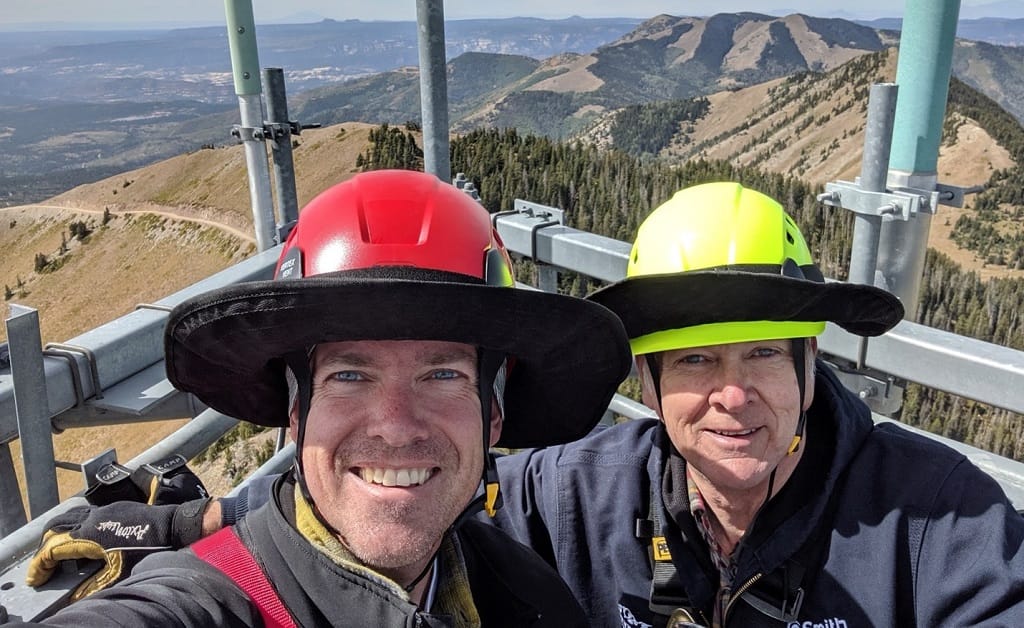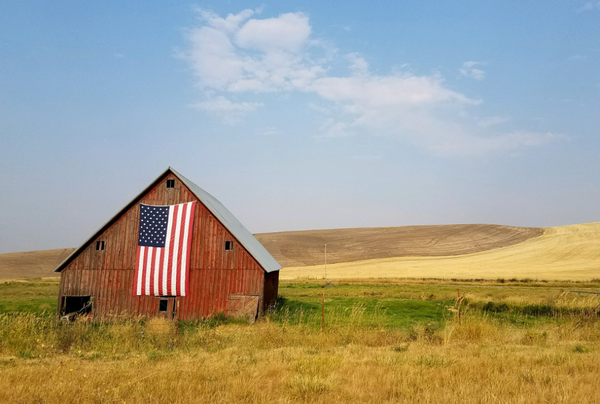In San Juan, Utah, a Snapshot of a School District’s Struggle to Bring Broadband Home
The fight for broadband infrastructure in one Utah community. Is private enterprise the end goal?

SAN JUAN, Utah, May 12, 2021 – The over-year-old Covid-19 pandemic has forced schools across the nation to grapple with an unprecedented reality: how to seamlessly bring the learning experience to the home.
Broadly, the discussion has largely centered on how to get sufficient broadband to areas to facilitate school-from-home scenarios – without much digging into the intricacies of the challenges. In some locations broadband adoption is an obstacle because residents who have access to broadband choose not to subscribe for various reasons.
But in some remote regions, the struggle is in the infrastructure itself that is preventing basic internet access.
The San Juan school district in southern Utah is one such community, whose struggles include the not-so-novel challenge of simply powering communications infrastructure.
The remoteness problem
Home to some of the most spectacular vistas in the world, there is a desolate beauty here that exists far from the busy offices and bustling streets of city life. But with that seclusion comes the challenges of rural living away from the amenities of urban centers, including access to broadband.

Monument Valley, Utah/Arizona border. Photo courtesy of Jean-Christophe Benoist
“There isn’t infrastructure here like there is in a city. It’s not just rural, it’s isolated,” said Kim Schaefer, principal at Whitehorse High School in Montezuma Creek, Utah. Many of the students live in remote pockets around the Navajo Nation tribal land, and would often only get electricity from solar panels or generators, and some don’t even have running water, she said.
When the pandemic closed schools a year ago, learning shifted to online courses through Canvas, a web-based system used by many universities and lower education institutions. But the San Juan school district quickly realized that the majority of their students couldn’t connect from home, Schaefer explained.
To solve the problem, the district began what would turn out to be a year-long colossal task to connect more than 500 students to the online system to continue their education. It first began with sending Chromebook laptops home with the kids and setting up hotspots at key locations so that they wouldn’t have to drive more than 30 minutes to connect, explained Chris Monson, network administrator for the school district.
The schools sent assignments home with the students, often along with lunches, either by bus or the students drove to the school to pick up their supplies. For the kids who couldn’t connect at home to Canvas, they often had to take pictures of their homework with a cell phone and send it to their teachers, but even that didn’t work sometimes because of poor service coverage throughout the region, Schaefer said.
Over the summer, Schaefer along with other school and district administrators worked with the Navajo Nation to figure out what needed to be done to improve the connectivity for students. With the help of San Juan school district Education Technology Director Aaron Brewer, the State of Utah legislature awarded a $3.9-million grant in August 2020 to build a large tower network.
The funding came from the Coronavirus Aid, Relief and Economic Security (CARES) Act, passed in March 2020, explained Rebecca Dilg from the Utah Governor’s Office of Economic Development. Some towers for the network were already in place, but they needed several more to bring service to locations that were otherwise left in the dark.

A radio tower they are using to get power around a mesa to the Oljato community. Photo courtesy of Chris Monson.
The power infrastructure problem
But building the network wasn’t a simple task of erecting towers in a straight line from one geographic point to another, because of the difficult topography in the region, Monson said. Some areas needed additional towers to swing the spectrum signal around large mesas, such as for the Oljato community.
The project required significant cooperation from various entities in the county. The school district partnered with several organizations to build the new network or use existing towers, including Select Tech, Vikor, Elk Petroleum and the Utah Navajo Health System.
In some areas, a lack of electricity prevented the use of towers to power the signal needed for the network. Monson said they’ve been working hard with the Navajo Tribal Utility Authority to get power to communities lacking electricity, but it’s still a major challenge.
After the grant funding was approved in August, permitting, contracts and other “red tape” was preventing them from moving forward, Monson said. In October, the permits and contracts finally went through, but the funding was only approved through the end of December, giving them about two months to complete the project.
They recruited as many people as possible from the Navajo Nation and other localities who had the necessary training, but the manpower still wasn’t enough. The crews worked 12 to 14 hours per day, every day, with no one taking vacation between October and end of December, Monson said. By the end of the December, with substantial work still to finish, they were expecting the funding to be cut off.
On December 30 around 3:00 p.m., Monson received a phone call that an extension for the funding had been approved through June 30, 2021. “That allowed the team to step back and figure out how to manage this better and utilize our resources instead of running around like chickens with our heads cut off,” he said. Another $800,000 was later approved when they realized they didn’t have enough money, he said.
The hope for private enterprise
Many students can now connect to their remote classrooms, but the project is still underway. Monson said they’ve connected about 200 homes, and hope to have over 500 connected by early June.
The project is not to deliver home internet access or compete with private service providers. Access to certain websites like social media are still blocked. Rather, it is intended to “move the classroom into the home,” Monson said, “Whatever they could do before in the classroom, they can do now in the home.”
Schaefer said they’ve had to change the curriculum significantly to meet the needs of the students in their remote learning environment. They built whole new aspects of the curriculum from the ground up, which was a major challenge, she said.
Some of the curriculum included science portions where students observed plants and animals in their home environment, for example. They also developed learning units based on the Utah State Board of Education’s “portrait of a graduate” concept, with four key areas that Schaefer called the “four C’s”: Critical thinking, Communication, Creativity and Collaboration.
Monson said the new network will help the school district into the future, but hopes it isn’t needed long term. They are hoping that in the future more service providers will move into the area and acquire the infrastructure the school district has built to provide better broadband to San Juan county residents, he said.
Many states recognize the need for better broadband projects, especially for rural areas like San Juan county in Utah. Dilg explained that the Utah state legislature recently approved another $10 million in grant funding for last-mile broadband projects to the home for unserved areas, a first for the state to appropriate such funding. Many other states are working on similar projects.










Member discussion